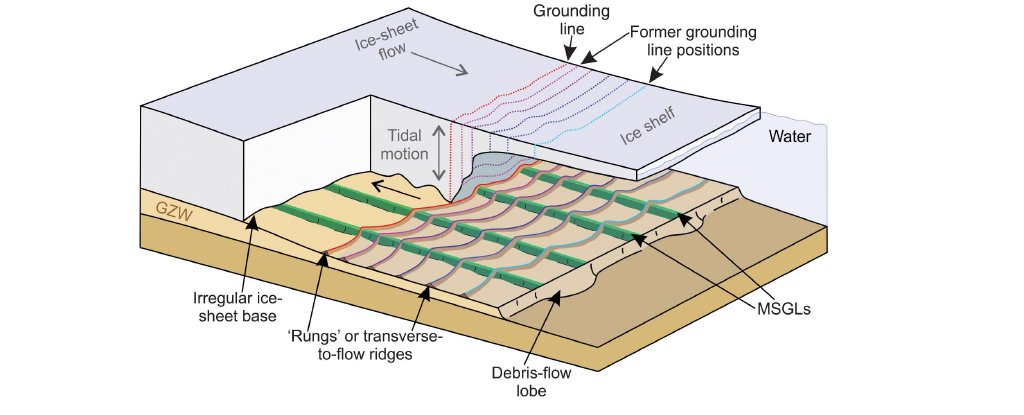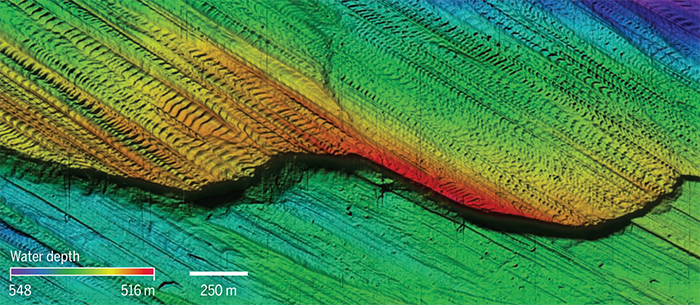
Ancient Ice Sheet Loss Shows Antarctica Can Melt Much Faster Than We Thought
by MIKE MCRAELast year, an expedition hunting for the remains of a famous explorer's ship off Antarctica's coast instead uncovered traces of a very different kind of history, one stretching back thousands of years to the end of the last great ice age.
Researchers have measured and mapped ridges on the ocean floor that represent a legacy of melting ice sheets, and it spells out a shrinkage of as much as 50 metres (more than 160 feet) in a single day.
If those markings are anything to go by, today's catastrophic loss of polar ice is a mere crawl compared to what's possible.
The Weddell Sea Expedition had high hopes when it set out to find Sir Ernest Shackleton's sunken vessel, Endurance, in the summer of early 2019. Deteriorating conditions forced an early end to their search just as they reached the predicted site of its watery grave.
Not all was lost, though. Researchers from the Scott Polar Research Institute at the University of Cambridge used the opportunity to map the seabed close to the east of the Antarctic Peninsula with the surveillance equipment they had on board.
Today, the area is a nursery for huge icebergs that calve from the Larsen Ice Sheet. During the last ice age, things weren't all that different, with massive rafts of ice extending far out from the coast.
Also much like today, changes in the global climate were causing the ice sheets to shrink as they melted away.
Measurements taken using an autonomous underwater vehicle hovering 60 metres (197 feet) above the floor provided researchers with details of the rippled landscape.

"By examining landforms on the seafloor, we were able to make determinations about how the ice behaved in the past," says Julian Dowdeswell, Director of the Scott Polar Research Institute.
"We knew these features were there, but we've never been able to examine them in such great detail before."
Less than 1.5 metres (about 5 feet) high, and spaced roughly 20 to 25 metres (65 to 82 feet) apart, the ridges were the product of floating plates of ice being lifted and dropped into the sediment by tides roughly 12,000 years ago.
Taking those measurements and applying some mathematics, it was clear that each day there was anywhere between 40 and 50 metres less ice. That adds up to more than 10 kilometres (over 6 miles) per year.
Modern satellite technology does a superb job of keeping a close eye on the changing geology of Antarctica's ice sheets today, dating back a few decades at best.
General estimates, such as one based on nearly two decades of observations at Pine Island Glacier, put current trends in the order of 1.6 kilometres (just under a mile) a year, or around ten times slower than estimated for the end of the last ice age.
Before we had eyes in space, we had to rely on written accounts of explorers just like Shackleton. Using to such records we've learned sea ice fluctuates wildly over the decades, with bursts of growth followed by large drops.
Climate change certainly seems to be having quite an effect on those drops, with record losses in sea ice being seen in recent years. But such long term, large-scale changes make it hard to develop a big picture of how climate affects ice growth and loss over long periods.
Having fingerprints of the dynamic changes in Antarctica's ice patterns from another period for comparison helps us contextualise our current situation, and possibly better predict its consequences.
The consequences of Antarctica losing her ice skirt could well be catastrophic for the rest of the continent. With around three quarters of the land mass edged by what is in effect a floating barricade, Antarctica is like a big bowl of cold, fresh water delicately poised to crack.
When it does, we'll not only see a rise in ocean levels, but changes in salinity and ocean temperatures that would have profound effects on polar currents, weather, and ecology.
"We now know that the ice is capable of retreating at speeds far higher than what we see today," says Dowdeswell.
"Should climate change continue to weaken the ice shelves in the coming decades, we could see similar rates of retreat, with profound implications for global sea-level rise."
It'd be nice to know we still have time to turn things around. Knowing that loss could be a lot faster isn't filling us with confidence.
This research was published in Science.